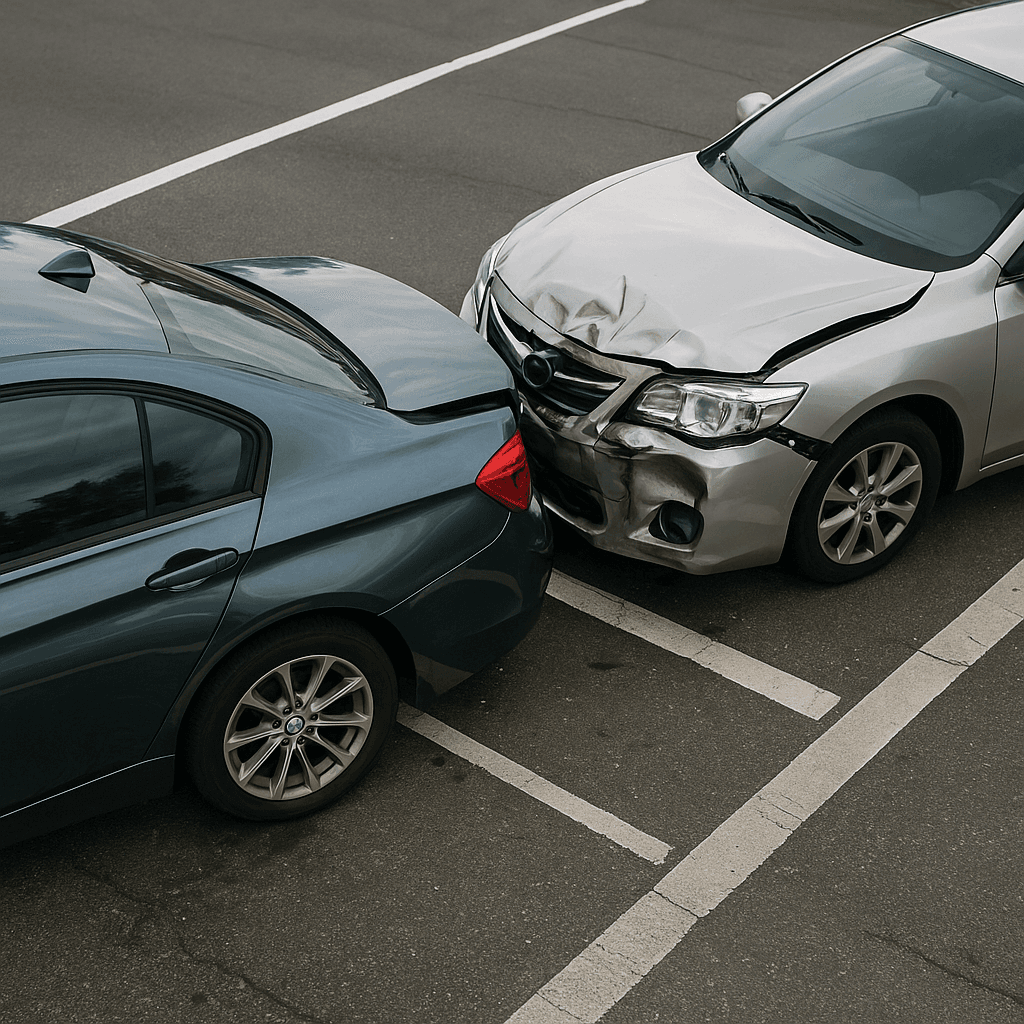
How Comparative Fault Can Impact Your Settlement

The Principle of Comparative Fault
In personal injury law, comparative fault—also known as shared liability—determines how responsibility for an accident is divided among the parties involved. Instead of viewing blame as all-or-nothing, this principle acknowledges that more than one person's actions can contribute to an injury. For example, if two drivers collide at an intersection, both may have acted negligently—perhaps one was speeding while the other failed to yield. In such cases, compensation is adjusted based on each person's percentage of fault.
This system aims to ensure fairness, but it can also significantly affect how much compensation an injured person ultimately receives. Understanding comparative fault is crucial for anyone pursuing a personal injury claim, as even a small finding of shared responsibility can reduce the settlement amount. A skilled personal injury lawyer helps clients navigate these complex laws, ensuring that fault is accurately assessed and the injured party's rights remain protected.
How Fault Allocation Affects Compensation
When fault is divided, the percentage assigned to the injured party directly impacts the settlement. For example, if a victim is found 20% at fault in a $100,000 claim, their recovery would be reduced to $80,000. This calculation might seem straightforward, but determining fault is often subjective. Insurance companies may try to increase the plaintiff's share of blame to minimize payouts.
To counter this, victims must provide strong evidence that clearly shows how the defendant's negligence played the greater role. Proper documentation, witness statements, and expert testimony are essential. Understanding how to maximize compensation in a personal injury settlement requires more than proving injury—it involves demonstrating the extent of the other party's liability. Strategic preparation and detailed case-building, as outlined in personal injury settlements – how to maximize compensation, can make the difference between a fair recovery and a disappointing outcome.
Comparative Fault and the Statute of Limitations
Time is a critical factor in personal injury law, and comparative fault adds another layer of complexity to the timeline. Even when both parties share responsibility, the statute of limitations still governs how long an injured person has to file a claim. If a lawsuit is not initiated within that period, the opportunity for recovery—no matter how valid the case—can be lost.
This is particularly important because shared fault often means extended investigation and negotiation periods. Gathering evidence, reconstructing the accident, and determining fault percentages can take time. Missing a filing deadline could therefore invalidate the case before it ever reaches court. Knowing the deadlines specific to each state and how they apply to shared liability situations is vital. The connection between timely action and case preservation is clearly emphasized when considering understanding statute of limitations in personal injury case, where acting within the required timeframe is shown to be just as crucial as proving fault itself.
The Risk of Waiting Too Long
Beyond the legal deadlines, delay can also hurt a victim's case by weakening the evidence. Witnesses forget details, physical evidence disappears, and insurers use the passage of time to question the seriousness of the claim. Comparative fault cases are especially vulnerable to these challenges, as each party may present competing narratives about what really happened.
When a victim waits too long to act, they risk more than just missing a deadline—they risk losing the leverage needed to prove minimal fault. Promptly consulting legal counsel ensures that evidence is preserved and that arguments about fault are grounded in facts, not assumptions. Acting early can be the deciding factor between success and dismissal. The importance of taking swift action before legal opportunities vanish is captured in statute of limitations – don't miss your chance for justice, which underscores how waiting can undermine even the strongest claims.
The Role of Legal Representation
Comparative fault cases often involve intricate arguments, detailed accident reconstruction, and aggressive defense strategies from insurance companies. Having a seasoned advocate ensures that these complexities are handled effectively. A personal injury lawyer not only gathers the necessary evidence but also interprets how comparative negligence laws apply to your jurisdiction. This guidance can prevent unfair blame distribution and safeguard your right to full compensation.
The role of an attorney becomes even more crucial when negotiations turn contentious. Insurance adjusters may claim that the victim shares more responsibility than is accurate, lowering settlement offers accordingly. A strong legal advocate anticipates these tactics and counters them with solid proof and negotiation skills. This professional support is the foundation for achieving optimal results—something further explored through personal injury lawyer – key to maximizing your case, which highlights how skilled advocacy can turn a contested case into a successful recovery.
How Duty of Care Interacts with Comparative Fault
To understand shared fault, it's essential to revisit the concept of duty of care—the legal obligation every person has to act responsibly and prevent harm to others. Comparative fault doesn't erase this duty; it simply recognizes that both parties may have breached it to some degree. For instance, a pedestrian jaywalking may share partial responsibility if struck by a speeding driver. Both parties failed their respective duties, though one may bear more blame than the other.
By analyzing how duty of care was breached on both sides, attorneys can effectively argue for a more favorable distribution of fault. The greater the defendant's deviation from reasonable care, the stronger the plaintiff's case becomes. This delicate balance between shared negligence and individual responsibility is central to personal injury law. The principle is explored in depth in understanding the "duty of care" in personal injury law, which emphasizes how maintaining and proving this duty is critical to every successful claim.
The Broader Impact on Personal Injury Cases
Comparative fault laws vary from state to state. Some jurisdictions follow a pure comparative negligence model, allowing recovery even if the injured party is primarily at fault, while others apply a modified comparative fault system that bars recovery if the plaintiff's fault exceeds a certain threshold, often 50%. Understanding which standard applies to your case is essential, as it determines whether any compensation is available at all.
Victims must also be aware that comparative fault influences negotiation strategies. Insurance companies often exploit confusion around these laws to reduce settlements. A clear understanding of your state's rules and strong representation ensure that these tactics don't succeed.
Ultimately, the goal in any personal injury case—especially those involving shared fault—is to minimize your percentage of blame and maximize your rightful recovery. Achieving that balance requires experience, strategy, and an unwavering commitment to justice.
Blog Posts:

The Role of Expert Witnesses in Injury Litigation
Why Expert Witnesses Matter in Personal Injury Cases In personal injury litigation, facts alone are often not enough. While evidence like medical records, photographs, and witness statements paint part of the picture, juries and insurance companies frequently need context and explanation to understand the full scope of an injury and its impact. This is where expert witnesses play a pivotal role. Expert witnesses are professionals—often doctors, engineers, economists, or accident reconstruction specialists—who provide testimony based on their specialized knowledge. Their objective is not to advocate for one side but to clarify complex issues that require professional interpretation. In many cases, their opinions help bridge the gap between evidence and understanding, making them critical to achieving fair compensation.

How Insurance Companies Evaluate Injury Claims
How the Evaluation Process Really Works When you file a personal injury claim, the insurance company begins a process that is anything but simple. Behind every offer or denial, there's a calculated evaluation designed to protect their bottom line. Insurers use data-driven methods, past claim outcomes, and internal guidelines to assess how much—if anything—they believe your case is worth. The goal of the insurance adjuster is straightforward: to settle your claim for as little as possible while closing the file quickly. They'll review your medical records, accident details, and even statements you've made to determine liability and damages. The more organized and detailed your claim presentation, the harder it is for them to undervalue it.

The Dangers of Handling a Personal Injury Case Without Legal Help
Understanding What's at Stake After an accident, it's natural to want to resolve things quickly. Medical bills begin piling up, your work may be disrupted, and insurance adjusters often seem eager to "help." Many people believe they can handle their personal injury claim on their own—especially if the situation seems straightforward. But personal injury law is complex, and even minor missteps can lead to significant financial loss. Without professional guidance, you may underestimate your claim's value, miss critical deadlines, or make statements that insurers later use against you. The legal process is designed to protect both sides, and insurance companies have experienced professionals working to limit payouts. Without an equally skilled advocate on your side, you're at a clear disadvantage. That's why consulting a personal injury lawyer early in the process is often the difference between fair compensation and a costly mistake.

When Should You Switch to a Different Injury Lawyer?
Knowing When It's Time for a Change Choosing the right attorney after an accident is one of the most important decisions you'll make in your recovery journey. However, not every lawyer-client relationship is a perfect fit. Sometimes, despite your best efforts, you may realize that your current representation isn't meeting your expectations. Whether it's poor communication, lack of progress, or a sense that your case isn't being handled effectively, recognizing when to switch attorneys can make all the difference in the outcome of your claim. Switching to a new personal injury lawyer doesn't mean starting over from scratch—it means taking control of your case and ensuring it receives the attention and effort it deserves. Understanding what to expect from your legal representation can help you identify the warning signs that it might be time for a change.
Get an agent on the line in seconds
Responsive
Legal Assistance
Our personal injury attorneys advocate for the funds necessary to cover bills, secure medical treatment, recoup lost wages, and provide compensation for your pain and suffering.
Are you facing unfair treatment from the insurance company?
Do you know the value of your case?
Is the insurance company asserting that the accident is your responsibility?

We'll get back to you ASAP.
Get Your Free Consultation
You Pay Nothing Unless We Recover Compensation For You
